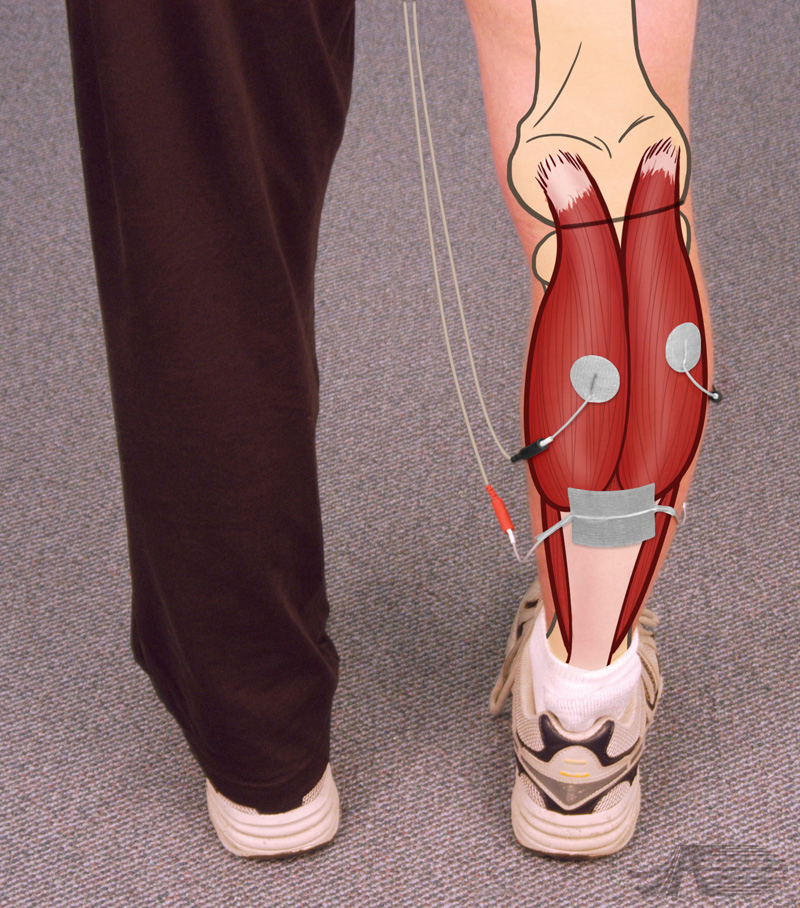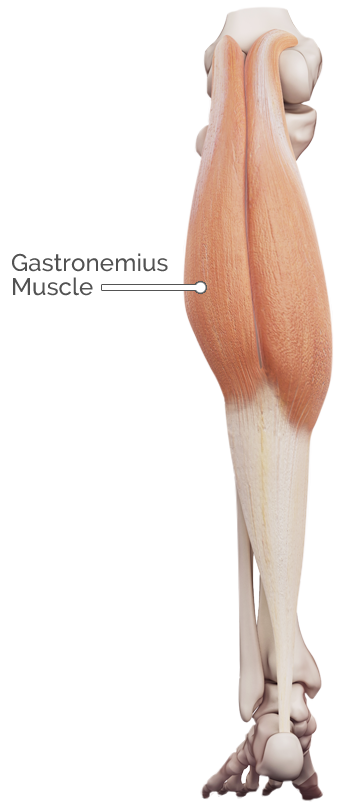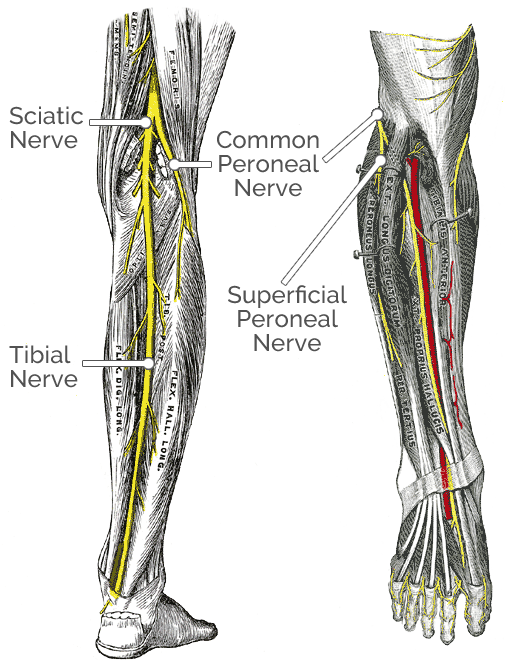Ankle Plantar Flexion Dual Channel Gastroc
Electrode Placement

Application Instruction by Dr. Lucinda Baker
Electrode placement for plantar flexion stimulation dual channel activation of the gastrocnemius muscles. The popliteal fossa is marked. An asymmetric waveform is used. The negative electrodes are placed over the medial and lateral gastrocs.
The positive lead from both channels is placed into the dual leadwire electrode positioned at the distal most component of the gastroc muscle.
Related Electrode Placements
Ankle Plantar Flexion Dual Channel Gastroc
Video Instruction
Audio Transcript:
Electrode placement for plantar flexion stimulation dual channel activation of the gastrocnemius muscles. The popliteal fossa is marked. An asymmetric waveform is used. The negative electrodes are placed over the medial and lateral gastrocs. The positive lead from both channels is placed into the dual leadwire electrode positioned at the distal most component of the gastroc muscle.
During stimulation the extremity is slightly un-weighted with the opposite foot placed forward. Activation of the gastroc results in heel rise with knee flexion.
Ankle Plantar Flexion Dual Channel Gastroc
Muscle Anatomy

Muscles involved in ankle plantar flexion:
Gastrocnemius
Origin: Superior to articular surfaces of lateral condyle of femur and medial condyle of femur
Insertion: Tendo calcaneus (Achilles tendon) into mid-posterior calcaneus
Other actions: Flexes knee
Soleus
Origin: Fibula, medial border of tibia (Soleal line)
Insertion: Tendo calcaneus
Plantaris
Origin: Lateral supracondylar ridge of femur above lateral head of gastrocnemius
Insertion: Endo calcaneus (medial side, deep to Gastrocnemius tendon)
Other actions: Flexes knee
Flexor Hallucis Longus
Origin: Fibula, posterior aspect of middle 1/3
Insertion: Plantar surface; base of distal phalanx of hallux
Flexor Digitorum Longus
Origin: Posterior surface of the body of the tibia
Insertion: Plantar surface; base of the distal phalanges of the four lesser toes
Tibialis Posterior
Origin: Tibia and Fibula
Insertion: Navicular and medial cuneiform bone
Other actions: Foot inversion
Peroneous Longus
Origin: Proximal part of lateral surface of shaft of fibula
Insertion: First metatarsal, medial cuneiform
Other actions: Foot eversion
Muscles involved in ankle plantar flexion:
Peroneous Brevis
Origin: Lower two-thirds of lateral fibula
Insertion: Fifth metatarsal
Other actions: Foot eversion
Ankle Plantar Flexion Dual Channel Gastroc
Nerve Anatomy

Nerves involved in ankle plantar flexion:
Gastrocnemius
Nerve innervation: tibial nerve from
the sciatic nerve
Nerve root: S1–S2
Soleus
Nerve innervation: tibial nerve
Nerve root: L5-S1
Plantaris
Nerve innervation: tibial nerve
Nerve root: anterior rami of S1-S2
Flexor Hallucis Longus
Nerve innervation: Tibial nerve
Nerve root: primarily S1 & S2 secondary
L5 nerve roots
Flexor Digitorum Longus
Nerve innervation: Tibial nerve
Nerve root: L5-S1
Tibialis Posterior
Nerve innervation: Tibial nerve
Nerve root: L5-S1
Peroneous Longus
Nerve innervation: Superficial peroneal
nerve
Nerve root: L5-S2
Peroneous Brevis
Nerve innervation: Superficial peroneal
nerve
Nerve root: L4-S2
This website uses cookies to analyze site traffic and provide you with the best experience possible. Learn more
This website uses cookies to analyze site traffic and provide you with the best experience possible.
Learn more
